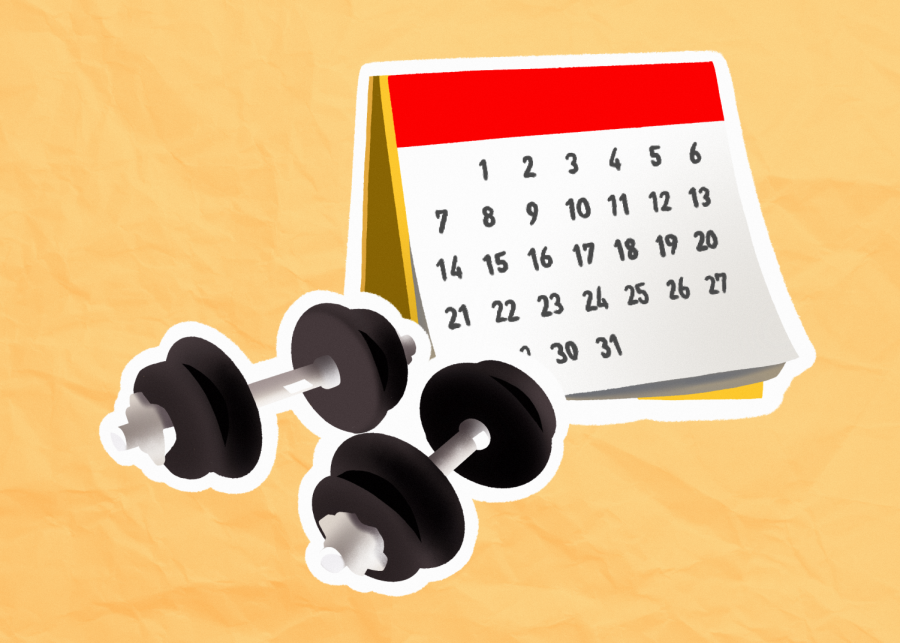Popular fitness influencers reviewed: Fab or flop?
Fitness influencers often advertise for rapid fitness transformations, promoting at-home workouts that thrive on Instagram and Youtube, especially during the pandemic. Along with its popularity, though, fitness culture is often clouded with misinformation. Over the past few months, staff writer Emilie Enser put four popular influencers and their workout programs to the test.
As I browse the internet for a good workout routine to follow, I’m bombarded with hundreds of video programs like Chloe Ting’s infamous “Get Abs in 2 WEEKS” — promising quick results and boasting “after” photos of perfectly toned muscles. Motivation for exercise fluctuates for all of us as we go through different periods of our life, and when it peaks, fitness influencers have made it their job to capitalize on this motivation and encourage people to stay active. From abs to high intensity interval training to toning arm workouts, there are hundreds of videos and programs to follow, each with different benefits and drawbacks.
However, it must be noted that many of their workout programs are advertised to give drastic results in short periods of time. Even when the programs are paired with a healthy diet, these expectations are still likely to be unrealistic and can negatively affect one’s mental health. In the past, if I didn’t see the physical results that I was promised, I became discouraged and didn’t want to continue. While many of the influencers show off impressive “before and after” pictures, it is important to remember that every body is different. In any case, it takes much longer than two weeks to form a habit, and I think that should be the main goal of these challenges.
“If a gym, trainer or class promises to make all your dreams come true in under six weeks, run—don’t walk—in the other direction,” certified personal trainer Lisa Snow told Healthline Media.
However, having a program to follow can help create a healthy routine and is usually a good start in the right direction. For these reasons, I generally don’t discourage these programs. By shifting my mindset so that I am simply doing a “workout challenge” rather than working out for a “body transformation,” these programs are truly helpful.
Having been an athlete my whole life, I’ve tried following a number of these programs. Between the enticing titles and shocking before and after photos, it can be difficult to know which programs are better and if any of them will even provide any results. To help the rest of you out, I’ve reviewed four programs from different fitness influencers that I’ve followed over the past year.
Sydney Cummings
- High-intensity, high-impact workouts
- Typically cardio or HIIT oriented
- 20–60 minute videos
Pros:
- Daily uploads provide tons of content
- High-intensity, really gets your heart rate up for longer periods of time
Cons:
- Easy to burn out if attempting to do her workouts daily
- Advertises the number of calories burned in the video titles; can contribute to a harmful mindset, and are not always accurate
Chloe Ting
- Mostly muscle toning, but some cardio as well
- 7–30 minute workout videos
- Offers programs/challenges with multiple videos
Pros:
- Reliable workouts for any goal
- Especially helpful for beginners or if you’re easing back into working out
- Has premade programs with calendars and links to each days workouts to complete
Cons:
- May be too low-intensity for some
- Many videos have the same or similar exercises, longer 25-day challenges may get repetitive
MadFit (Maddie Lymburner)
- 10–30 minute workouts
- Varied content with toning, cardio, dance workouts and stretching
- Generally more low-intensity, good for supplemental workouts
Pros:
- Varied content keeps workouts entertaining
- Usually gives the demonstration and explanation of all the exercises before the workout starts so that you know what’s ahead and understand the movements
- Has a second account with lots of nutrition-based content and inspires clean eating (under the name Maddie Lymburner)
Cons:
- May be too low-intensity for some people
Lilly Sabri
- 6–60+ minute workouts
- Content covers muscle toning, cardio, pilates and nutrition
Pros:
- Has premade programs with calendars and links to each day’s workouts
- Has a cookbook and lots of nutrition based content on Instagram and personal website
- Daily uploads, tons of content
- Does her week long programs/challenges live on Instagram with her supporters, is extremely active and encouraging on all platforms
Cons:
- Typically advertises for inaccurate quick results
- Workouts may get repetitive if they are your only source of exercise
Overall, all of these different programs motivated me to continue working out, even when all I wanted to do was binge-watch Gilmore Girls in bed. Staying active is crucial for both physical and mental health, and these fitness influencers provide a variety of workout options that are easily doable from home — it’s like having a COVID-friendly personal trainer!
I love seeing how much stronger I can get through these programs. Having someone to lead me through exercises with constant words of encouragement and upbeat music makes working out all the more fun. Even though the calorie-count is sometimes advertised, workouts should be chosen based off of what makes you feel good, because that’s the main goal of working out. Especially in difficult times like these, being able to stay motivated and fit at home is always a plus.





